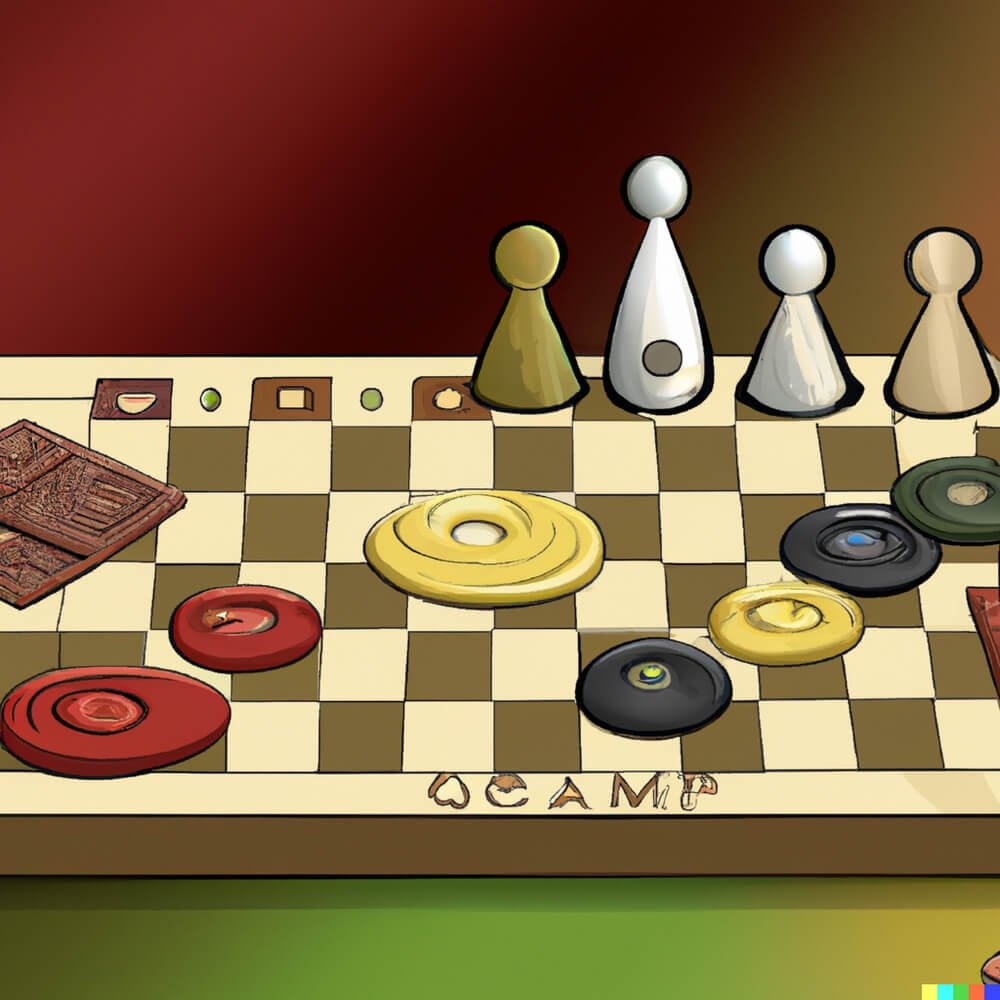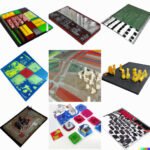Introduction
Cashflow 101 is a board game created by Robert Kiyosaki, the best-selling author of ‘Rich Dad, Poor Dad’. It was designed to help people learn financial principles and gain an understanding of how money works in business. The object of the game is to create cash flow from passive investments such as stocks, bonds and real estate. Players use their incomes to invest in these assets and generate cash flow, while avoiding lifestyle inflation. Through this process players can often grow their income enough to “break free” from the rat race – meaning reach a level of income that exceeds their outgoings.
The game has become immensely popular over the years due to its unique ability to teach players key financial principles in an entertaining way. Kiyosaki’s teachings have had an immense impact on countless investors’ decisions and it also served as a jumping off point for Kiyosaki’s journey as an investor and entrepreneur. Through Cashflow 101 players learn valuable lessons such as delayed gratification, reducing lifestyle inflation and investing in assets that generate income rather than liabilities which take it away.
The Benefits of Cashflow 101
The Cashflow 101 board game created by Robert Kiyosaki is a great tool for those wanting to learn about personal finance and investing. It offers an interactive way to get an understanding of how money works, how investments are made and the effects of each five-year period in the stock market. The game also educates players on budgeting, saving and living within their means as well as introducing them to different investment strategies such as buying rental properties, stocks, businesses and mutual funds.
Not only does it provide a fun and engaging way to become educated on the financial realm, but playing Cashflow 101 has many other benefits that can improve your financial well-being. By playing this game you can strengthen your problem solving skills by making decisions quickly based on opportunity cost and risk tolerance. You will gain confidence in managing your own finances such as setting a budget, allocating savings goals, researching investments and understanding interest rates and credit scores. This knowledge will help you to plan for retirement with realistic goals. Additionally you will be able to teach others about money management by sharing tips or playing the game together which creates a meaningful connection with those you care about. Finally learning about finances could lead towards discovering an investment passion, or even turning into a professional investor!
Rules and Mechanics of The Game
Cashflow 101 is a board game that was created by Robert Kiyosaki in 1996. The game is designed to give players an understanding of real-life financial matters, such as money management, investments and budgeting. It is best played with two to six people in about two hours per session.
The objective of the game is for players to make enough passive income from their investments to reach “the fast track” before their opponents do. The fast track can be thought of as a goal line which serves as the endgame condition ” once one player reaches it, the game ends and that person wins.
The board itself consists of a series of 400 boxes laid out around its perimeter. These represent various expenses, financial commitments, opportunities and events related to personal finance such as stocks, bonds, mutual fund investments and real estate deals (which are represented by the four circles near the bottom right corner). Player pieces move along these boxes one space at a time while they try to increase their net worth through smart investments and career upgrades (which move them forward more quickly). Once they reach “the fast track”, they win!
Players must plan around the surprises that come from wheel cones next to each box (similar to many traditional board games). When it’s a player’s turn on this wheel cone or spin wheel chance cubes, then players must perform whatever task or instruction shown on them – for example draw salary cards if there are salary symbols or pay taxes when Income Tax symbols appear. After taxes have been paid then players can continue on with their play pattern until they reach “the fast track”.
Strategies for Winning Cashflow 101
Cashflow 101 is an educational board game created by Robert Kiyosaki. The game teaches players the basics of understanding business, personal finance, and investing. The objective of the game is to enable the players to understand how money works in real life and help them build wealth. It does this by replicating real-life financial scenarios in a game format.
When playing Cashflow 101, there are some tips and strategies you should keep in mind to increase your chances of winning. First, begin building assets as early as possible and acquire property with positive cash flow. The goal is to make your income exceed your expenses so that you have more money to invest and grow your wealth. Second, develop good financial habits such as budgeting, sticking to a savings plan and investing in the right places such as stocks or bonds for the long term instead of short term gains. Thirdly, diversify your investments so that even if one asset crashes it won’t take down too much with it – this way you always have something left behind regardless of what happens in the market or with individual stocks or bonds. Lastly, study and analyze every move you make in order to understand why things happen when they do – this will help you anticipate future moves and avoid costly mistakes or overlooked opportunities. A combination of these strategies can help give any Cashflow 101 player an advantage over their opponents!
Cashflow 101 Player Reviews
Cashflow 101 board game by Robert Kiyosaki is a great way to practice money management and financial strategy. Players can use their cash flow statements to learn how to analyze financial data and make wise investments with their capital. It also offers lessons in communication, negotiation, and goal setting.
The game allows players to consider the potential outcomes of different choices in terms of investing and decision-making. Players get to play realistic ‘what if’ scenarios as they navigate through an investment portfolio, manage a business, and deal with taxes.
Players also must consider real-life situations like job losses or unexpected debt repayments which add complexity and realism/ authenticity to the experience. The game encourages players to change their financial mindset by teaching them about investing principles such as diversification and leveraging equity.
Since its launch in 1996, Cashflow 101 has become an extremely popular board game amongst financial wizards, entrepreneurs, investors, educators, and even everyday individuals who want to understand basic money management skills. Reviews from several former players have mentioned that it attracts people from all walks of life”from college students graduating into adulthood or older adults looking for alternative ways of learning personal finance literacy skills. All these players have come away impressed with its educational value while having fun at the same time!
Final Thoughts
Cashflow 101 Board Game, created by Robert Kiyosaki, is an innovative game that introduces players to the basics of personal finance. This game is designed to teach players how to develop a better understanding of their personal finances and investment opportunities. The game applies fascinating and easy-to-follow principles to simulate real-life financial situations as well as strategies. Players make investments into specific businesses or receive passive income from other sources. Through these activities, players learn about managing debt, building an emergency fund, investing for retirement, and much more.
The Cashflow 101 Board Game has proven itself highly successful in teaching financial literacy because it combines serious money strategy with entertaining gameplay. It doesn’t just offer theoretical guidance but instead immerses the player in a simulated world and forces them to wrestle with real-world financial questions and scenarios. Additionally, the game incorporates many breaks for players to pause and analyze their successes, failures, and strategies in order to apply those same principles when playing the real stock market months later if they so choose. With its flexible difficulty settings depending on the level of expertise required by each group of players, Cashflow 101 Board Game is appropriate for people of all ages who are interested in learning how to become financially literate.
For those looking to become more knowledgeable about personal finance and investing, Cashflow 101 Board Game is definitely a must-have tool! Not only will it help create an exciting gaming experience while teaching key concepts like asset diversification, budgeting, wealth creation, economic cycles; but also will give players a unique insight into personal finance that could greatly benefit them beyond just playing the game itself. Moreover, other classic board games such as Monopoly are often not suitable for aspiring investors as due to their outdated and sometimes misleading dynamics; making Cashflow 101 essential for anyone wanting reliable financial advice without having understanding complex concepts or taking any trivial risks at all.

I love playing all kinds of games – from classics like Monopoly to modern favourites like Ticket to Ride.
I created this blog as a way to share my love of board games with others, and provide information on the latest releases and news in the industry.





